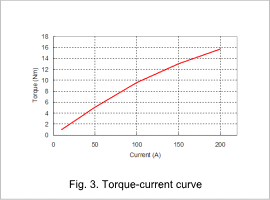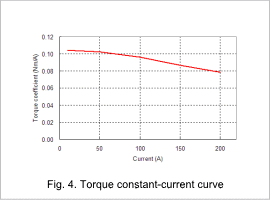Overview
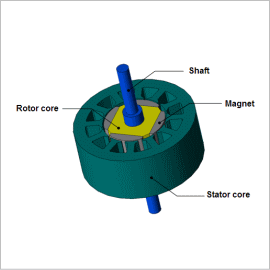
Because a permanent magnet synchronous motor’s torque-current curve is highly susceptible to saturation effects in the motor’s magnetic circuit, it is helpful to obtain the torque-current curve with a magnetic field analysis taking saturation into account in order to evaluate the motor’s design and drive characteristics.
This Application Note presents how to obtain the torque-current curve as a basic property of one type of permanent magnet synchronous motor, the surface permanent magnet synchronous (SPM) motor.
Magnetic Flux Density Distribution
Figures 1 and 2 show the magnetic flux density distribution at current amplitudes of 10 A and 200 A.
From the figures, it can be seen that there are differences in the flow of magnetic flux due to larger and smaller current amplitude, such as changes in the locations of teeth with high magnetic flux density. This is due to magnetic saturation in the teeth, and these changes in the flow of magnetic flux affect the torque.
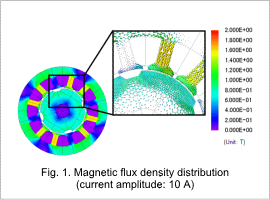
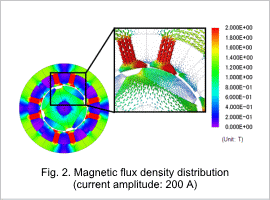
Torque-Current Curve, Torque Constant-Current Curve
Figures 3 and 4 show the torque-current curve and torque constant-current curves.
It can be seen from figures 3 and 4 that the ratio of torque increase declines with increased current. This is because the flow of magnetic flux changes, as seen in figures 1 and 2.
